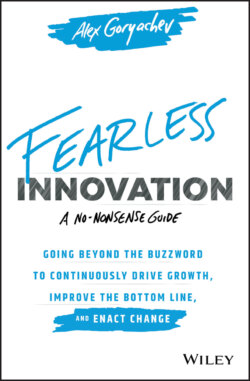Читать книгу Fearless Innovation - Alex Goryachev - Страница 8
Living with Change
ОглавлениеI’m no stranger when it comes to dealing with change. After all, I was born in a place that no longer exists—the USSR. When I was sixteen years old, I witnessed my home country, one of the most powerful in the world at the time, collapse practically overnight, affecting nearly 300 million people and generating sudden economic and societal shifts that will continue to have an impact for generations to come.
Later in my teens, I was transplanted to the United States. Suddenly, I was exposed to shockingly different societal and economic norms than those I had been used to, and I felt a little lost, uncertain where I fit in. I longed for some type of purpose, meaningful connection, and freedom of self-expression that I couldn’t find at first. My English and overall social skills weren’t the greatest, so I invested my time in teaching myself the Linux operating system, hung out with a local hacking community of fellow weird outcasts, and became a supporter of the Electronic Frontier Foundation, a groundbreaking nonprofit that was the first to understand the importance of civil liberties and personal privacy in cyberspace. These were the best choices I’ve ever made.
During the early dot-com days, I was lucky to experience the community spirit of Silicon Valley before the boom. I was warmly welcomed in California by a diverse group of free-thinking technology professionals from around the world, and I invested my days and nights in projects that came to define and shape the future of digital entertainment and the music industry.
In addition to co-founding and launching a music touring and production company, I found my tribe and worked nonstop at Liquid Audio, a startup that pioneered a new business model for the music industry, allowing consumers to purchase high-quality music content online, while ensuring artists and labels still got paid. Later, I went to the “dark side” and practically moved in to Napster’s offices, the largest and most controversial online music service of the early 2000s. They were being sued by Metallica, one of my favorite bands at the time, as well as the Record Industry Association of America (RIAA), which was worth billions of dollars, and I was there to help Napster change their technology architecture and business model while they raced against the clock to survive.
Fast forward a decade, and I landed at Cisco, leading the company’s Co-Innovation Centers, setting strategy, and, more importantly, driving co-innovation with startups, key customers, and channel partners, as well as with cities and governments in fourteen countries. These award-winning innovation programs also provide employees, at all levels, with the opportunity to share and implement their biggest and brightest ideas. Even better, they ensure that the rest of the company actively supports these employees in these endeavors.
Besides leading the overall co-innovation strategy at Cisco in the Corporate Development and Strategy team, I’ve worked in numerous areas of the company, contributing to its success and helping to shape its approach to innovation throughout the enterprise. Starting in sales, I worked on ecosystem enablement, then moved to global marketing in an effort to streamline global operations. Among other departments, I also held positions in corporate finance, working on business transformation, and in engineering, developing new emerging technologies and business models. These experiences have provided me with a 360-degree view of how the World’s #1 Workplace operates, innovates, and succeeds.3
Having given hundreds of presentations on innovation and spoken with thousands of people about the topic, I’ve had the chance to regularly share my experiences and learn from my peers around the world. Those with less hands-on experience with the topic, however, tend to ask me the same questions over and over again: Is innovation real, or is it a load of BS? If it is real, how should we innovate? How do we overcome our fear of missing out on trends or failing? Where should we focus our attention? And wait, what’s innovation again?
When I answer these questions, I feel like I’m a part of a support group, and I am often the “innovation therapist.” Because really, that’s what most people I’ve spoken with need (no, not therapy, though some of us certainly do need that), but a clear, pragmatic guide—relaxed, jargon-free, and unpretentious—that will help them get over their confusion and start innovating with a sense of purpose.
